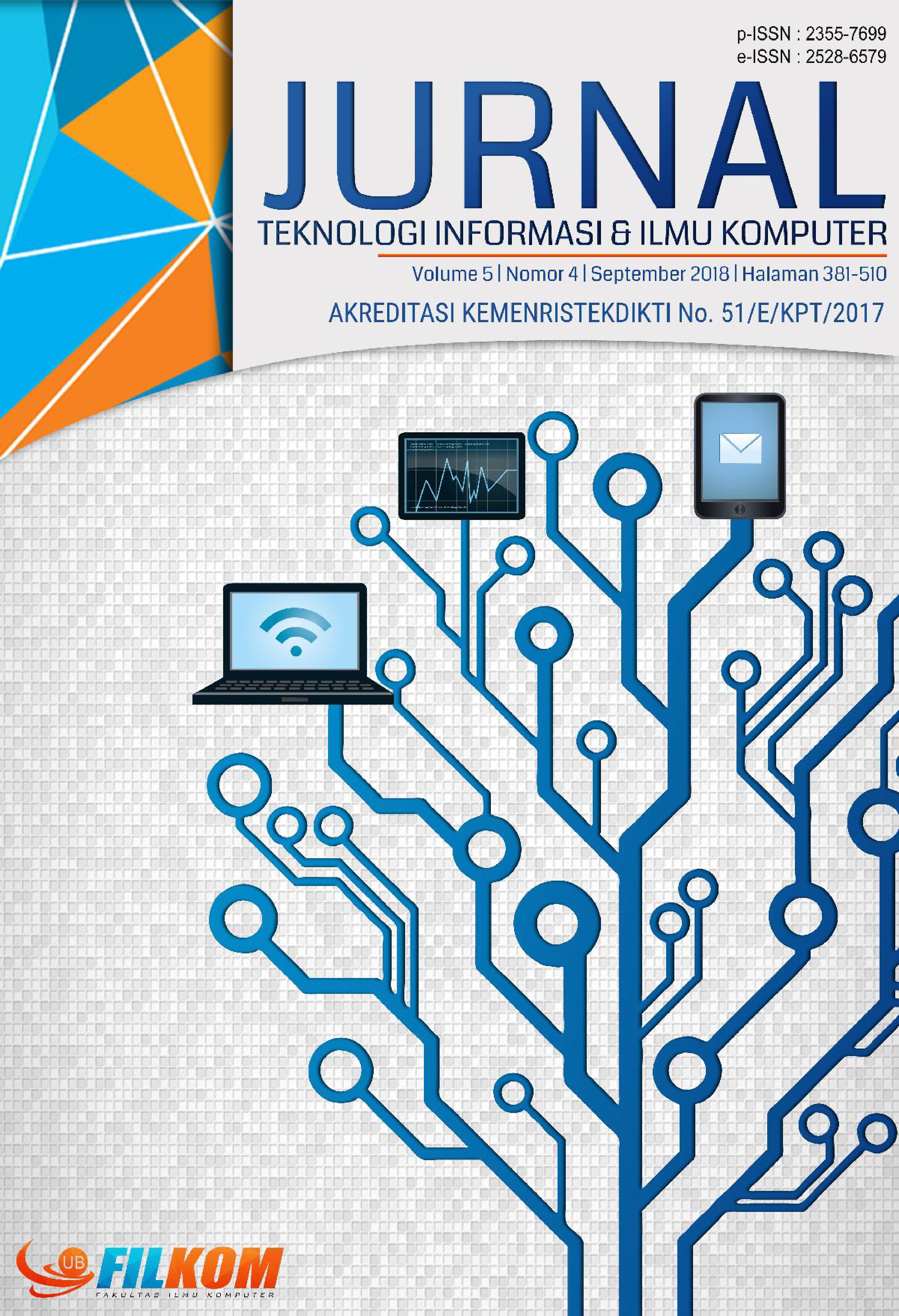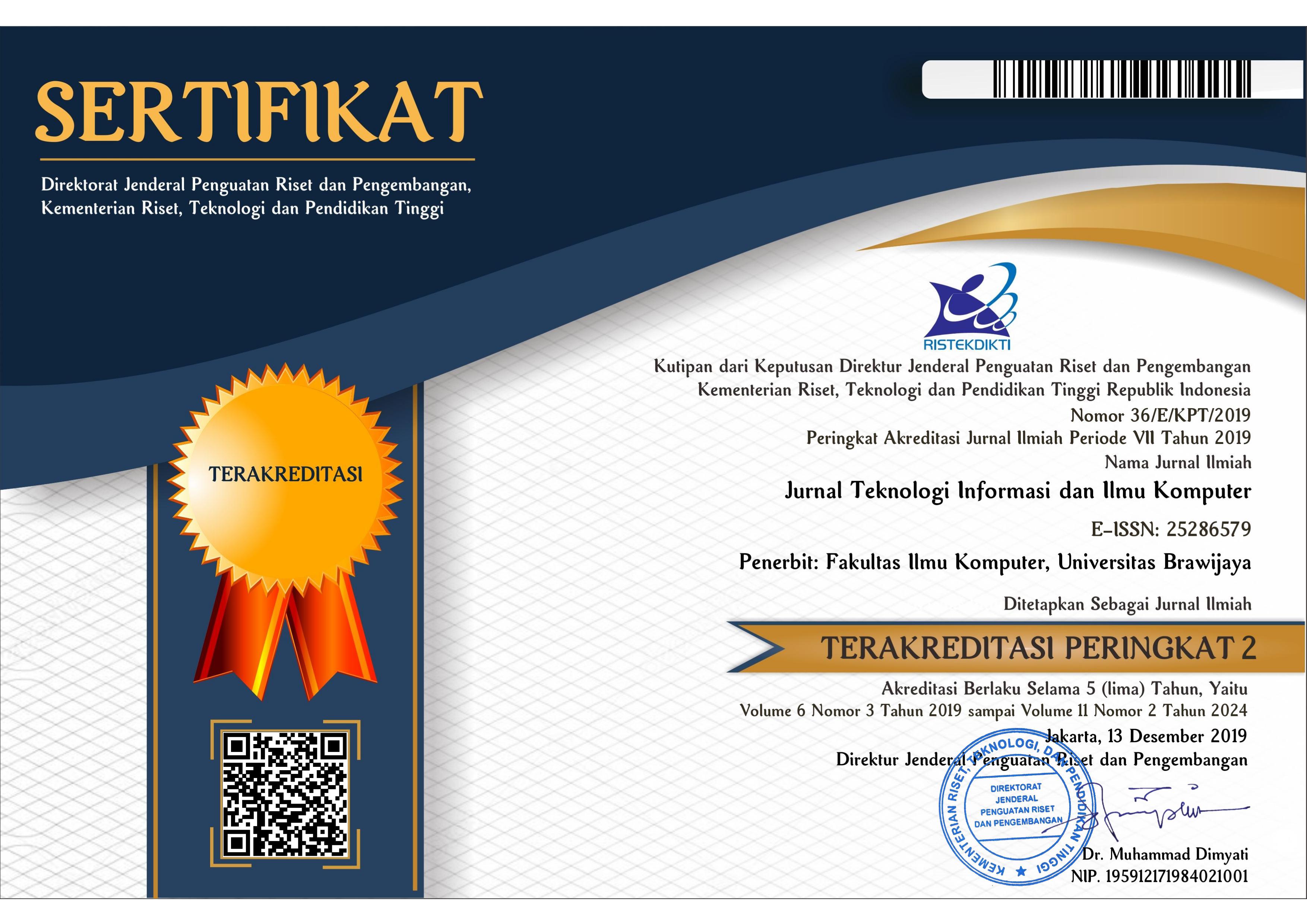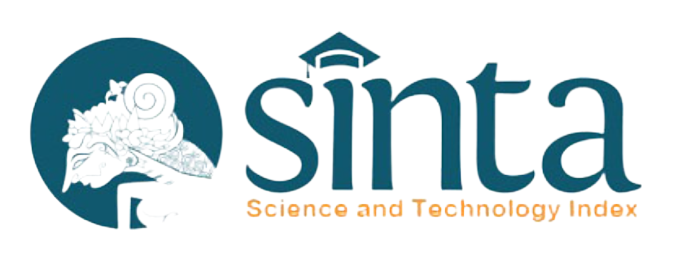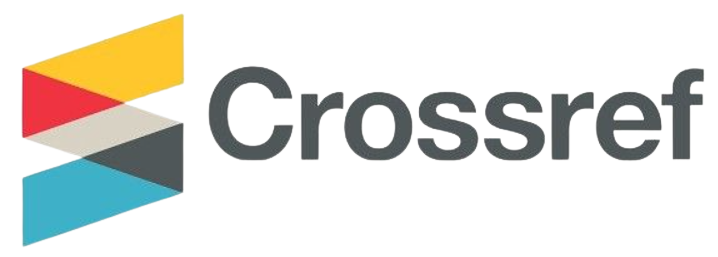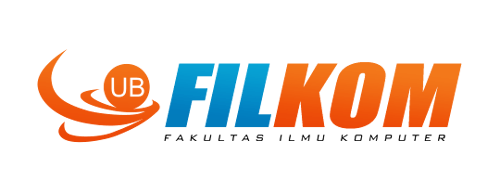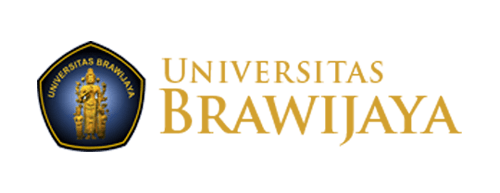Pengembangan Terapi Cermin Pada Latihan Bersepeda Berbasis Virtual Reality Untuk Meningkatkan Gerak Motorik Ekstremitas Atas Pasca Stroke
DOI:
https://doi.org/10.25126/jtiik.201854914Kata Kunci:
VR-Bicycling, Kinect, Operabilitas, Kontrol, Waktu tunda, Perbedaan spasialAbstrak
Latihan bersepeda berbasis virtual reality (VR-Bicycling) bagi penderita pasca stroke merupakan teknologi yang dikembangkan untuk meningkatkan gerak motorik otot. Penerapan VR-Bicycling umumnya untuk melatih gerak motorik ekstremitas bawah daripada gerak motorik ekstremitas atas. Penggunaan terapi cermin (Mirror Therapy-MT) merupakan bentuk terapi gerak motorik ekstremitas atas dengan mempengaruhi propriosepsi otak yang berfikir bahwa eksterimitas atas yang mengalami hemiparesis dapat bergerak baik. Dalam penelitian ini dikembangan modul VR-Bicycling untuk melatih gerak motorik ekstremitas atas berbasis MT dengan mengkombinasikan umpan balik visual dan audio pada lingkungan virtual (Virtual Environment-VE). Umpan balik visual untuk mengetahui waktu tunda dan perbedaan spasial berupa ketepatan lengan virtual dalam menangkap apel atau menghindari bom sepanjang lintasan bersepeda. Sedangkan umpan balik audio menggunakan metronome untuk melatih operabilitas dan kontrol lengan virtual. Kinect digunakan sebagai motion capture gerakan lengan nyata. Pengujian melibatkan sepuluh penderita pasca stroke untuk melatih gerak motorik ekstremitas atas yang mengalami hemiparesis dalam mengontrol gerakan lengan virtual pada VR-Bicycling. Evaluasi sistem dilakukan dengan meminta penderita pasca stroke menjawab daftar pertanyaan yang mengandung faktor operabilitas, konsentrasi, kontrol gerakan, waktu tunda, dan perbedaan spasial dari terapi ekstremitas atas pada VR-Bicycling menggunakan konsep terapi cermin. Dari hasil evaluasi diketahui bahwa waktu tunda dan perbedaan spasial pada terapi ekstremitas atas menggunakan VR-Bicycling dengan MT merupakan dua variabel penting untuk mengontrol arah dan ketepatan gerakan lengan virtual pada VE.
Abstract
A virtual reality bicycling (VR-Bicycling) was encouraged to address motor control and fitness deficits of person post-stroke. The applied of VR-Bicycling for therapy of person post-stroke has focused primarily on improving movement and use of the lower extremity than upper extremity. Mirror therapy (MT) is an instrument that enables a person with an amputation to view a reflection of an intact limb in the visual plane of the missing limb by tricking the brain into believing the missing limb is actually moving. The use of virtual reality (VR) over MT is that VR allows more complete immersion into the illusion, whereas MT requires tight focus and concentration to truly see the illusion as real. In this research, we had developed a VR-Bicycling module based MT for training upper extremity of person post-stroke while doing simulated bicycling. Person post-stroke cycled with guidance of visual cueing (represented as apples and bombs) and auditory condition (provided by metronome) in the virtual environment (VE). We tested ten person post-stroke as they cycled on a stationary bicycle while moving their virtual limb to hit apples or avoid bombs in VE. A VR-Bicycling module measures the motion data of upper extremity by Kinect and evaluate immersion and motor cognition by using factor analysis with three factors consisting of controllability, concentration, sense of delay, and spatial difference. The evaluation result indicates that temporal delay and spatial fluctuation have strong relationship to control virtual limb movement correctly.
Downloads
Referensi
ANGGORO, P. D. W. 2018. Kajian Interaksi Pengguna Untuk Navigasi Aplikasi Prambanan VR Berbasis Virtual Reality. Jurnal Teknologi Informasi dan Ilmu Komputer, 5(2), 239-246.
BANTON, T., STEFANUCCI, J., DURGIN, F., FASS, A., & PROFFITT, D. 2005. The perception of walking speed in a virtual environment. Presence: Teleoperators & Virtual Environments, 14(4), 394-406.
CANTERO-TÉLLEZ, R., NAUGHTON, N., ALGAR, L., & VALDES, K. 2018. Outcome measurement of hand function following mirror therapy for stroke rehabilitation: A systematic review. Journal of Hand Therapy.
CHIU, H.C. and ADA, L., 2016. Constraint-induced movement therapy improves upper limb activity and participation in hemiplegic cerebral palsy: a systematic review. Journal of physiotherapy, 62(3), pp.130-137.
DEUTSCH, J. E., MYSLINSKI, M. J., KAFRI, M., RANKY, R., SIVAK, M., MAVROIDIS, C., & LEWIS, J. A. 2013. Feasibility of Virtual Reality Augmented Cycling for Health Promotion of People Post-Stroke. Journal of neurologic physical therapy: JNPT, 37(3).
DE VRIES, S., & MULDER, T. 2007. Motor imagery and stroke rehabilitation: a critical discussion. Journal of rehabilitation medicine, 39(1), 5-13.
DOHLE, C., PÜLLEN, J., NAKATEN, A., KÜST, J., RIETZ, C., & KARBE, H. 2009. Mirror therapy promotes recovery from severe hemiparesis: a randomized controlled trial. Neurorehabilitation and neural repair, 23(3), 209-217.
FARJADIAN, A. B., KONG, Q., GADE, V. K., DEUTSCH, J. E., & MAVROIDIS, C. (2013, June). VRACK: measuring pedal kinematics during stationary bike cycling. In Rehabilitation Robotics (ICORR), 2013 IEEE International Conference on (pp. 1-6). IEEE.
FUKUMORI, S., GOFUKU, A., ISATAKE, K., & SATO, K. 2014, October. Mirror thrapy system based virtual reality for chronic pain in home use. In Industrial Electronics Society, IECON 2014-40th Annual Conference of the IEEE (pp. 4034-4039). IEEE.
HOLDEN, M. K. 2005. Virtual environments for motor rehabilitation. Cyberpsychology & behavior, 8(3), 187-211.
LAMONT, K., CHIN, M., & KOGAN, M. 2011. Mirror box therapy–seeing is believing. Explore: The Journal of science and healing, 7(6), 369-372.
MASIERO, S., CELIA, A., ROSATI, G., & ARMANI, M. 2007. Robotic-assisted rehabilitation of the upper limb after acute stroke. Archives of physical medicine and rehabilitation, 88(2), 142-149.
POWELL, W. A., & STEVENS, B. 2013, August. The influence of virtual reality systems on walking behaviour: A toolset to support application design. In Virtual Rehabilitation (ICVR), 2013 International Conference on (pp. 270-276). IEEE.
RAMACHANDRAN, V. S. 2005. Plasticity and functional recovery in neurology. Clinical Medicine, 5(4), 368-373.
RANKY, R., SIVAK, M., LEWIS, J., GADE, V., DEUTSCH, J. E., & MAVROIDIS, C. 2010, March. VRACK—virtual reality augmented cycling kit: Design and validation. In Virtual Reality Conference (VR), 2010 IEEE (pp. 135-138). IEEE.
SATO, K., FUKUMORI, S., MATSUSAKI, T., MARUO, T., ISHIKAWA, S., NISHIE, H., TAKATA, K., MIZUHARA, H., MIZOBUCHI, S., NAKATSUKA, H., MATSUMI, M., GOFUKU, A., YOKOYAMA, M., & MORITA, K. 2010. Nonimmersive virtual reality mirror visual feedback therapy and its application for the treatment of complex regional pain syndrome: an open-label pilot study. Pain medicine, 11(4), 622-629.
SUMMERS, J. J., KAGERER, F. A., GARRY, M. I., HIRAGA, C. Y., LOFTUS, A., & CAURAUGH, J. H. 2007. Bilateral and unilateral movement training on upper limb function in chronic stroke patients: a TMS study. Journal of the neurological sciences, 252(1), 76-82.
WU, C. Y., HUANG, P. C., CHEN, Y. T., LIN, K. C., & YANG, H. W. 2013. Effects of mirror therapy on motor and sensory recovery in chronic stroke: a randomized controlled trial. Archives of physical medicine and rehabilitation, 94(6), 1023-1030.
YAVUZER, G., SELLES, R., SEZER, N., SÜTBEYAZ, S., BUSSMANN, J. B., KÖSEOĞLU, F., ATAY, M. B., & STAM, H. J. 2008. Mirror therapy improves hand function in subacute stroke: a randomized controlled trial. Archives of physical medicine and rehabilitation, 89(3), 393-398.
Unduhan
Diterbitkan
Terbitan
Bagian
Lisensi

Artikel ini berlisensi Creative Common Attribution-ShareAlike 4.0 International (CC BY-SA 4.0)
Penulis yang menerbitkan di jurnal ini menyetujui ketentuan berikut:
- Penulis menyimpan hak cipta dan memberikan jurnal hak penerbitan pertama naskah secara simultan dengan lisensi di bawah Creative Common Attribution-ShareAlike 4.0 International (CC BY-SA 4.0) yang mengizinkan orang lain untuk berbagi pekerjaan dengan sebuah pernyataan kepenulisan pekerjaan dan penerbitan awal di jurnal ini.
- Penulis bisa memasukkan ke dalam penyusunan kontraktual tambahan terpisah untuk distribusi non ekslusif versi kaya terbitan jurnal (contoh: mempostingnya ke repositori institusional atau menerbitkannya dalam sebuah buku), dengan pengakuan penerbitan awalnya di jurnal ini.
- Penulis diizinkan dan didorong untuk mem-posting karya mereka online (contoh: di repositori institusional atau di website mereka) sebelum dan selama proses penyerahan, karena dapat mengarahkan ke pertukaran produktif, seperti halnya sitiran yang lebih awal dan lebih hebat dari karya yang diterbitkan. (Lihat Efek Akses Terbuka).

